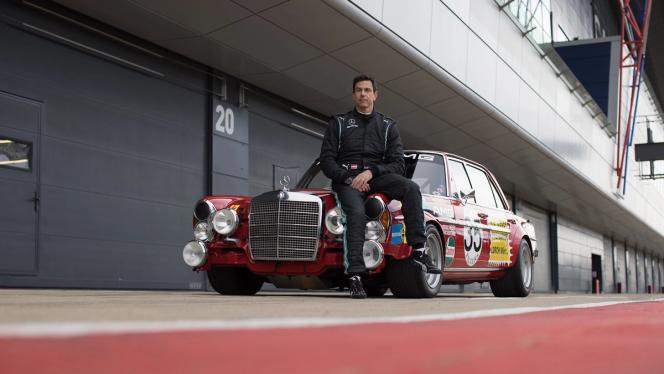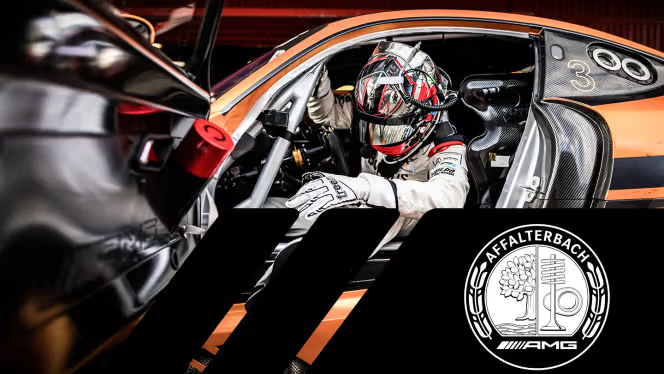The evolution of the safety car
“I never stopped enjoying it”
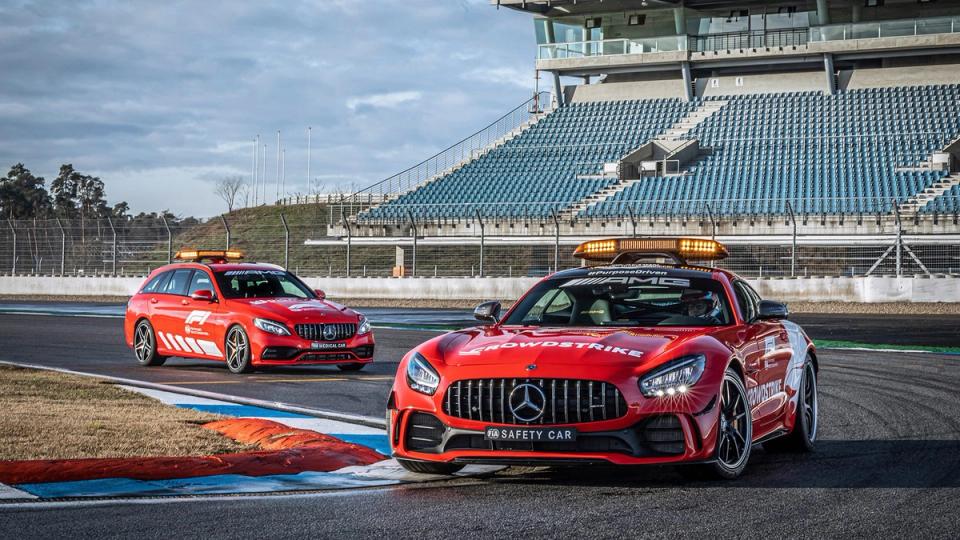
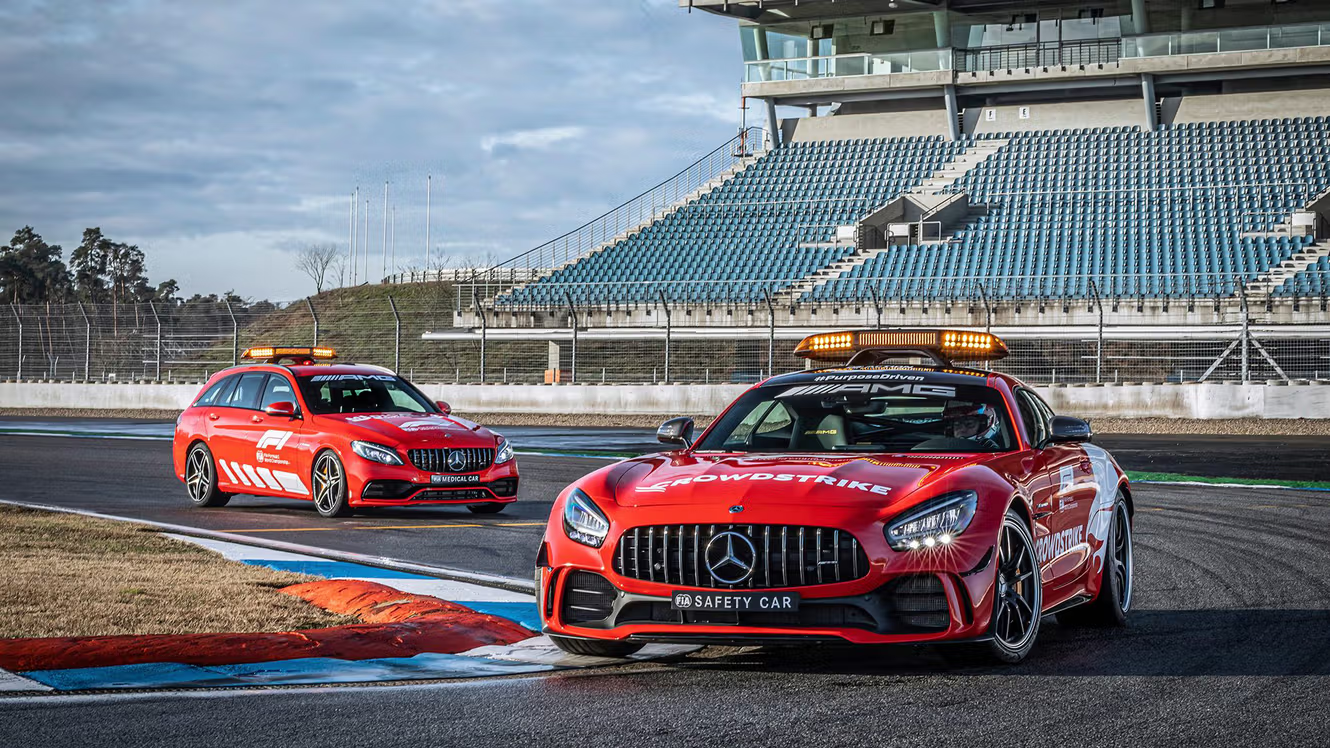
When the start lights turn off on race day and all engines simultaneously roar to life, it's not just the spectators who gaze spellbound at the cars. In the shadow of the spectacle, the safety car approaches from behind the field of drivers and rolls to its final waiting position in front of the pit lane. What is now a familiar sight was long unthinkable after the first safety car debuted in the 1970s, since the first missions ended in chaos.
In 1973, the hour struck for Eppie Wietzes at the Mosport Canadian Grand Prix
It was not a dream start, as the hometown safety pilot landed in the wrong position among the field of drivers. It wasn't until hours after the race that the ensuing chaos was sorted. This was a time in which laps were still timed by hand. Several drivers took it upon themselves to claim victory. The safety car then disappeared from the scene and didn't return to Formula 1 until 1993. It has been an omnipresent watchful eye at both training and races ever since. Unlike today, however, there weren’t vehicle partnerships. For each race, organizers determined independently which vehicle they would use as a safety car.
This changed after an exclusive contract with Mercedes-Benz in 1996. For the next 25 years, Mercedes-AMG vehicles were front and centre in bad weather and poor track conditions. In 2000, Bernd Mayländer, a former DTM driver and AMG brand ambassador, became the face of the safety car, defying the turbulent way in which F1 usually evolves. But even in his 22nd season, the veteran driver was met with some surprises.
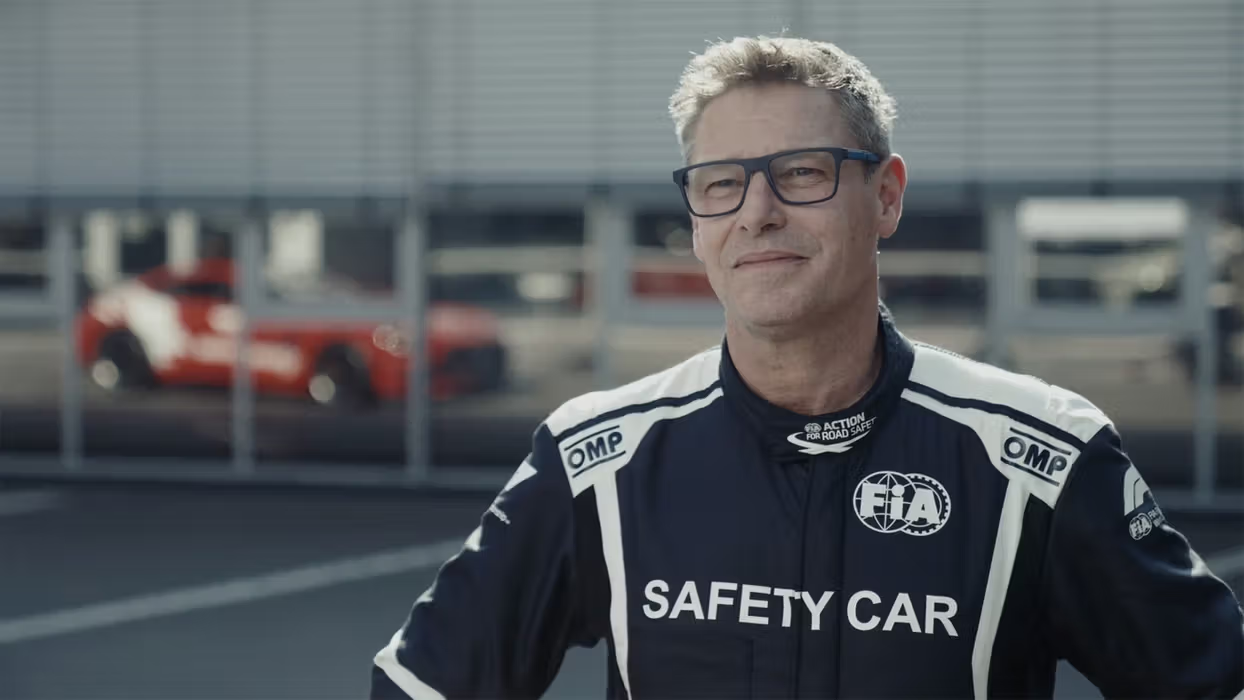
Bernd Mayländer
Born: 29.05.1974
Hometown: Schorndorf, Germany
Safety car driver since: 2000
Current model: Mercedes-AMG GT R
You've been a safety car driver for more than 20 years now. During that time, have you ever felt the desire to race?
Personally, the prospect of driving in Formula 1 was never really realistic or tangible. I still remember my first steps in motorsport, particularly the Nürburgring's Nordschleife, when I watched the 24-hour race live in 1989. I never thought I'd grace the track myself. It wasn't until Mercedes-Benz called in '94, asking if I wanted to drive in the DTM, that a path toward doing so on a professional level became clear to me. That was an incredible development. But I've always been into touring cars, so that appealed to me more.
In 2021 you'll be switching between two cars for the first time during a season. Are you happy about the change or have you become attached to your Mercedes-AMG GT R?
I see it in a positive light. Of course, you can't forget that for 25 years both the safety car and medical car were provided solely by Mercedes-AMG. In the new setup with Aston Martin, we have two great sports cars. Who could complain about alternating between two such outstanding brands?
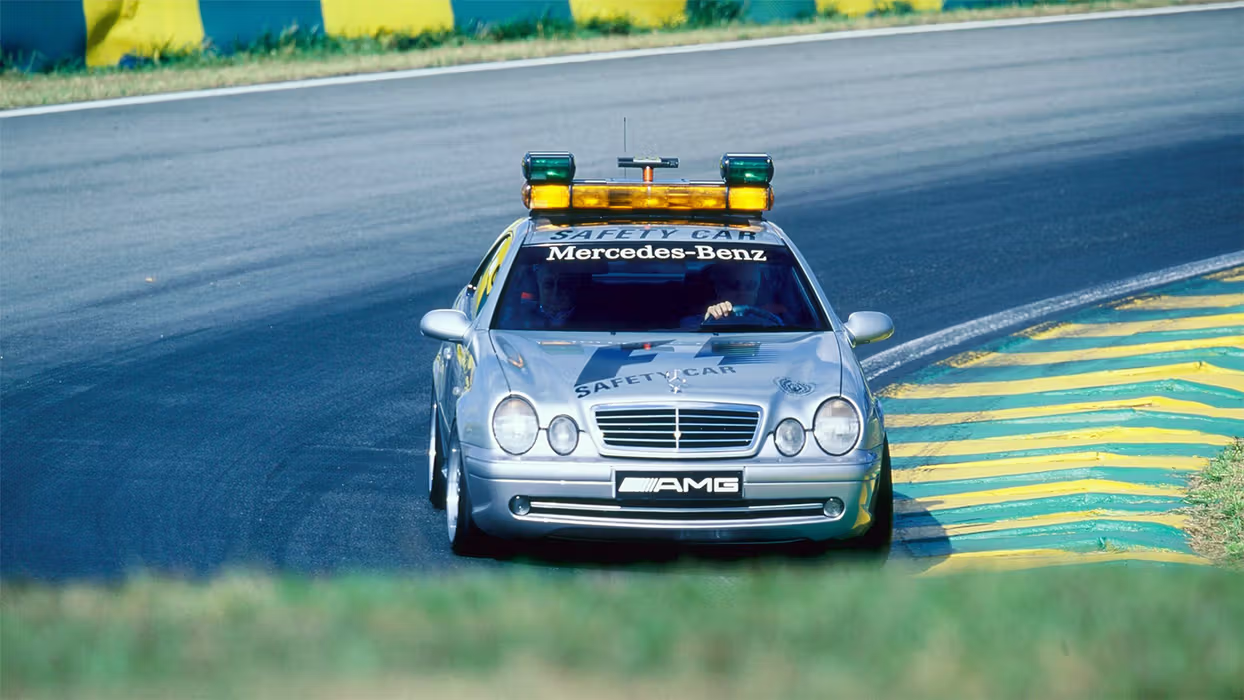
How do you prepare for a new season?
After the winter break, the emails and phone calls start to pick up and you can tell it's time to start planning. For me, that means getting in shape physically. After that, the safety car is tested. The last few years we were in Nardò, where the cars were put through their paces. This year, we had to do the tests in Papenburg. The FIA also asked if I could test the Aston Martin in England. Unfortunately, that wasn't possible due to the entry restrictions, so a colleague from the medical car, who is based there, took over.
Let's look back at your beginnings. How did you get in touch with Formula 1?
Allow me to elaborate. In 1998, I drove for Mercedes-AMG – in the legendary CLK GTR – in the FIA GT-1 championship. Since the program was dropped the next year, I decided to leave the Mercedes family and went back to driving Porsche Cup championships and endurance races. At the San Marino Grand Prix in Imola, I got a call from Charlie Whiting, the Formula 1 race director. At first, I thought, Oh dear, the FIA’s on the phone, what happened? Then we had a coffee together. Charlie asked if I wanted to be the safety car driver for the upcoming Formula 1 season. I could gain experience in Formula 3000 on the very same day. Two hours later, I was in the car and drove my first race. I made my Formula 1 debut in 2000, at the Australian Grand Prix in Melbourne. It was in the CL 55 AMG.
During a race, you may be called into action at any time. What do you do while you're waiting?
The vehicle comes with two inner monitors on which we can follow the race. In the past, it was a little less entertaining. It can be pretty tough to sit in the car at temperatures of up to 40 degrees. Now, however, you're fully involved. You're in the car for more than 12 hours over the course of a weekend. You keep each other awake, talk to each other, and come up with your own strategies and rituals.
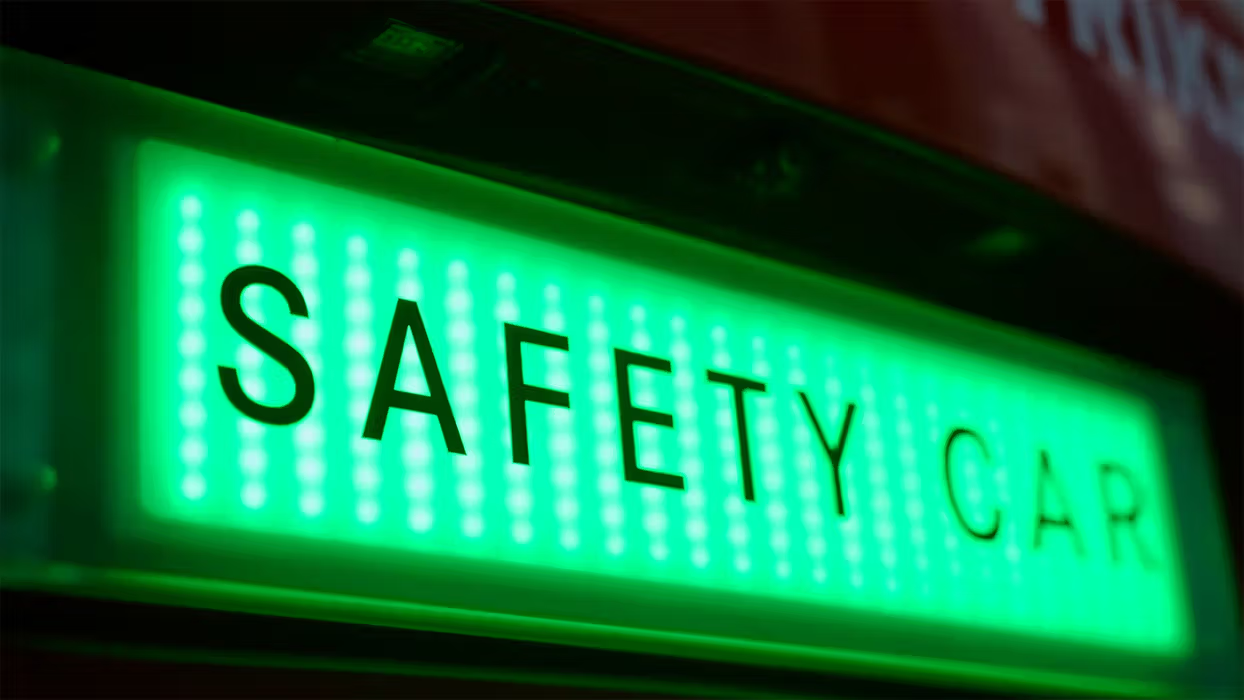
Who supports you on and off the track?
Trackside, of course, are our mechanics, who maintain the safety car. This year, we have three mechanics per race. In addition, there are colleagues in Affalterbach who look after the back-up vehicle. And next to me in the safety car is my long-time co-driver, Richard Darker, who supports me on the track and in communicating with race directors.
It goes without saying that the safety car is there for safety, but it can also have a considerable influence on the course of the race. Have drivers ever complained to you after a race?
That wouldn't be the right way to put it. The drivers get a kick out of it, even if things don't always go their way. It has happened that our efforts have interfered with a driver's strategy. On the other hand, there have also been races where the yellow flag has resulted in a driver winning who probably wouldn't have won otherwise. I also don't take comments that I'm too slow in the safety car personally. Of course I'd love to go full throttle with the GT R. But my priority is safety first.
You've had a number of AMGs as safety cars. Which one have you liked best so far?
You develop favourites, of course. My '99 safety car comes to mind – the Mercedes-Benz CLK 55 AMG. Back then, it had 360 horsepower under the hood, with a V8, 5.5-liter engine. That was a real beast both on the road and racetrack. Or the 2001 Mercedes-Benz SL 55 AMG, the first supercharger, which premiered at the Formula 1 Grand Prix in Hockenheim.
When do you think we can expect the first hybrid safety car?
As long as they don't take away the power, I have no problem with it (laughs). I honestly don't know, but I'm pretty sure that Mercedes-AMG is moving in the right direction and that a hybrid safety car is just around the corner. Formula 1 already has this technology, after all.
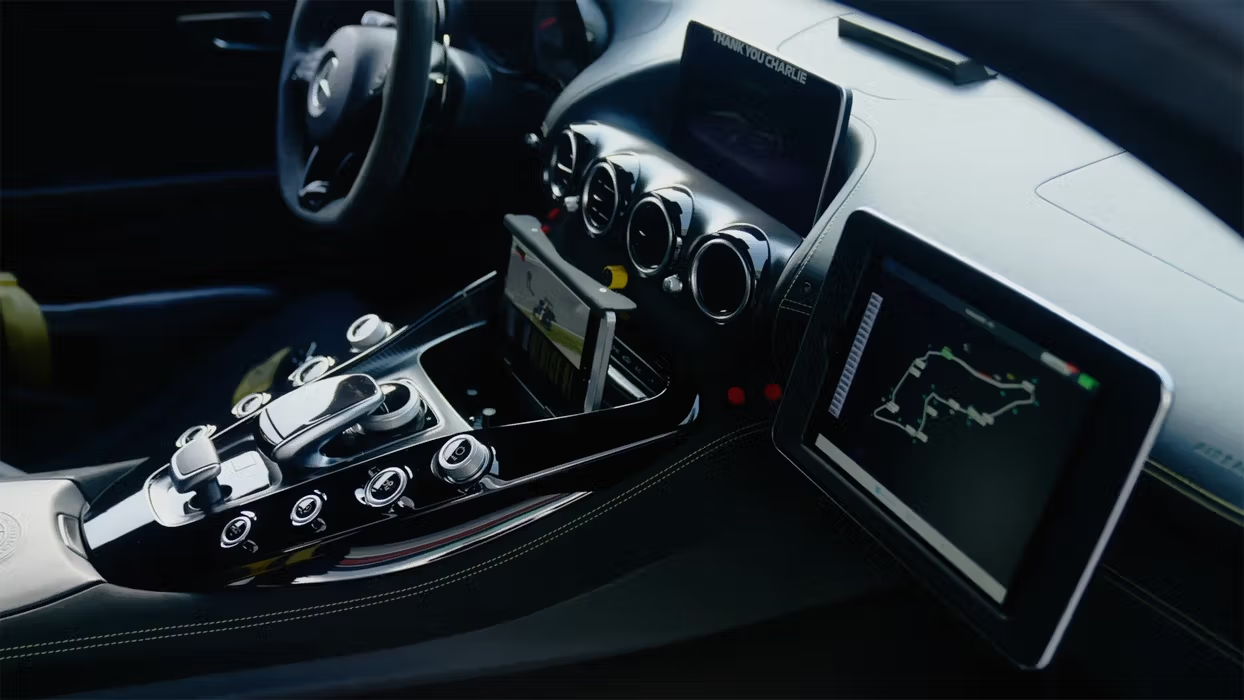
And which AMG would you like to drive as a safety car?
Well, a Mercedes-AMG Project ONE would be an absolute dream. But I think that would also be too much of a good thing. We're currently driving the Mercedes-AMG GT R (combined fuel economy: 12.4 l/100 km, combined CO2 emissions: 284 g/km), and then there's the AMG GT Black Series (combined fuel economy: 12.8 l/100 km | combined CO2 emissions: 292 g/km). Of course, that's another level of sports car. I'm open to anything, and if a hybrid is added at some point, things will move even faster. The future looks bright.
There are already virtual safety car phases. What does the future of the safety car look like?
At the beginning, when the virtual safety car was introduced, people naturally took a deep breath. But you can't control everything virtually. It's useful when there are small problems. It's a different story when people have to go out on the track. You have no choice but to send out a real safety car and herd the field. I'm not too concerned. With the brands and models we have the privilege to drive, it's a pleasure to be out there.
What's your conclusion after 20 years of Formula 1? Does the sport continue to excite you or are you starting to feel some fatigue?
You're really tired at the end of the year but once you've been back home for a few days, you're eager to start the new season again. Besides, next year there will be new regulations and other significant changes. I never stopped enjoying it. This year, it's a bit tighter again. The big names like Vettel and Hamilton aren't getting any younger and new stars are shining bright. Competition is important because that's ultimately what propels us and the brands to push for even better performance.
